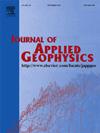XAI-driven contamination for self-supervised denoising with pixel-level anomaly detection in seismic data
IF 2.2
3区 地球科学
Q2 GEOSCIENCES, MULTIDISCIPLINARY
引用次数: 0
Abstract
Deep learning (DL) applications in seismic data processing is crucial for accurate subsurface interpretation. However, post-migration seismic data often suffer from noise that can obscure key geological features and impair analysis. Despite the availability of various denoising techniques, a significant gap remains in achieving both robust performance and interpretability without reliance on extensive labeled datasets. This paper proposes a novel solution to this emerging issueby employing an explainable self-supervised approach that combines Deep Convolutional Denoising (DCD) networks with a SHAP-based Noise Contamination detection model and isolation forest techniques. Unlike existing models, which are limited by labeled datasets, our proposed approach emphasizes on the noise features while using DCD's predictive capabilities. Our findings highlighted the novel use of the SHAP denoising approach to effectively isolates and modifies seismic noise. The model was validated using a real world seismic dataset and proven to perform exceptionally well when compared to traditional approaches. Using the Peak Signal-to-Noise Ratio (PSNR) as the benchmark metric, the SHAP 15% contamination approach fared better at various noise scales. Notably, with a White Gaussian Noise Scale of 60.0, the PSNR method result was 24.62, above the scores of the Random Noise contamination (24.39) and Ground Roll contamination approaches (23.46). Similar superiorities were observed at scales 40.0 and 80.0, reaffirming the SHAP 15% contamination method's superiority. Consequently, this integrated approach not only promises enhanced seismic denoising but also demonstrates quantifiable and explainable superior performance metrics, laying the foundation for future seismic processing endeavors.
求助全文
约1分钟内获得全文
求助全文
来源期刊

Journal of Applied Geophysics
地学-地球科学综合
CiteScore
3.60
自引率
10.00%
发文量
274
审稿时长
4 months
期刊介绍:
The Journal of Applied Geophysics with its key objective of responding to pertinent and timely needs, places particular emphasis on methodological developments and innovative applications of geophysical techniques for addressing environmental, engineering, and hydrological problems. Related topical research in exploration geophysics and in soil and rock physics is also covered by the Journal of Applied Geophysics.
 求助内容:
求助内容: 应助结果提醒方式:
应助结果提醒方式:


